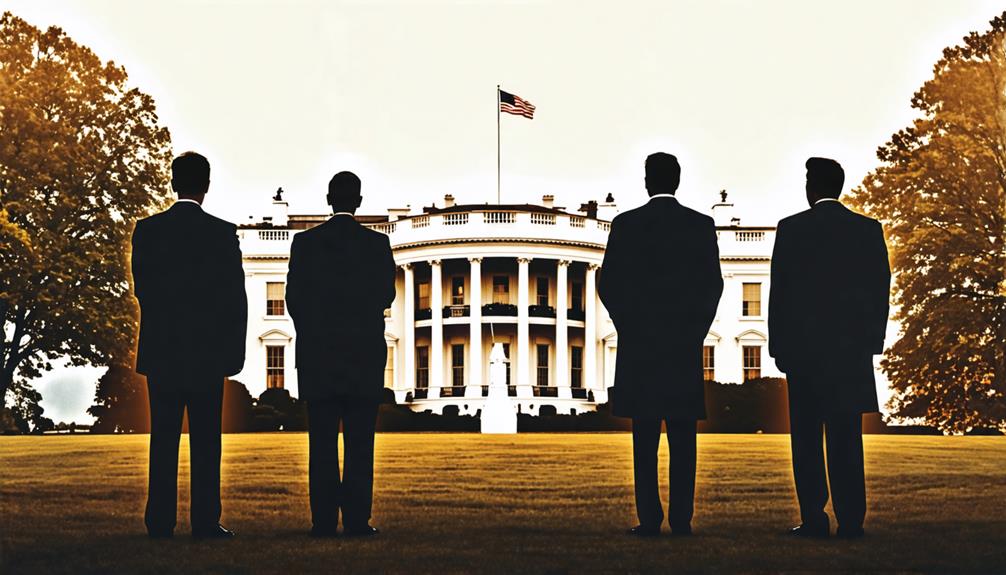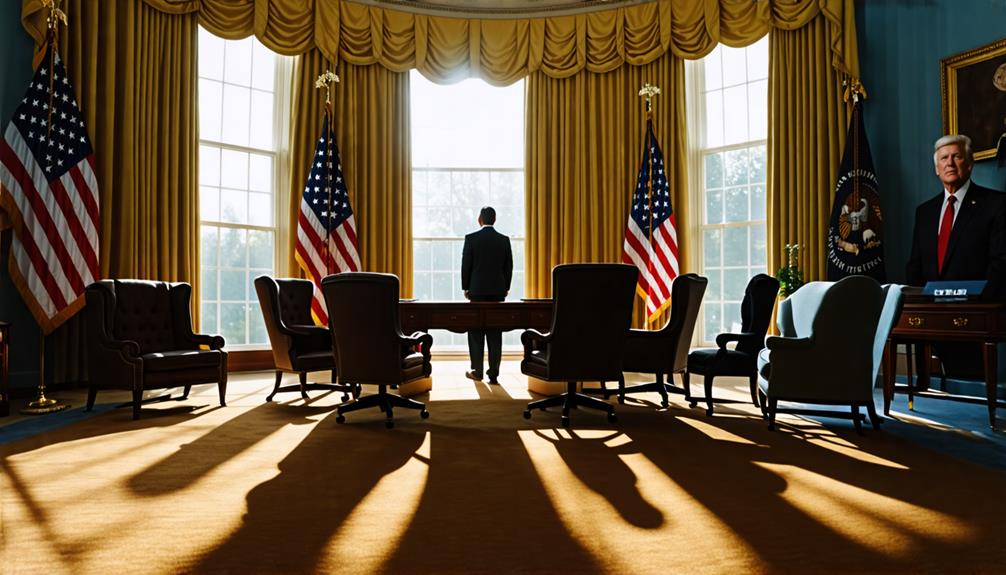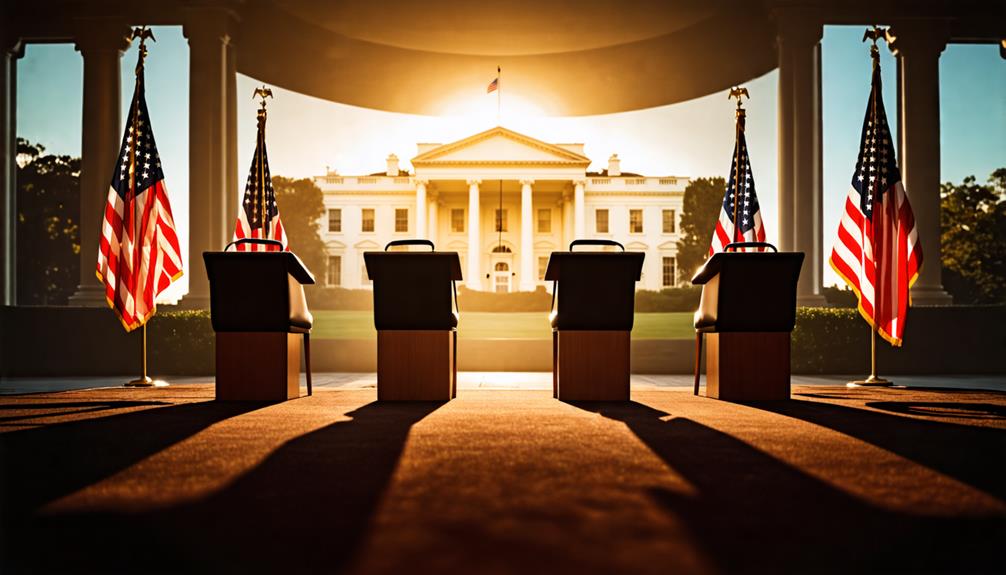You might assume that every U.S. president has had a vice president by their side, but that's not always been the case. In fact, four presidents served without a VP during their terms, highlighting a significant gap in the country's executive leadership structure. This unusual situation occurred before the 25th Amendment was ratified in 1967, leaving these presidents to navigate their roles without a clear second-in-command. The absence of a vice president during these administrations raises intriguing questions about how the government functioned and what potential risks this arrangement posed to the stability of the nation.
Key Takeaways
- John Tyler, Millard Fillmore, Andrew Johnson, and Chester Arthur served as U.S. presidents without vice presidents.
- These presidents assumed office after their predecessors died, leaving the vice presidency vacant.
- The lack of formal succession procedures before 1967 led to prolonged periods without a vice president.
- Absence of a vice president created leadership challenges and slowed decision-making during national crises.
Presidential Succession Before 1967

America's presidential succession process was fraught with uncertainty before 1967, leaving several presidents to serve without a vice president during their terms.
You'll find that James Madison was the first to experience this, as both his VPs died in office. John Tyler's ascension to the presidency after William Henry Harrison's death in 1841 set a precedent for succession, but he served his entire term without a VP. Millard Fillmore and Andrew Johnson also found themselves in this position after their predecessors died.
These gaps in leadership raised concerns about governance continuity and highlighted vulnerabilities in the American system. Without formal procedures to fill vice presidential vacancies, presidents often served incomplete terms or entire terms without a second-in-command.
This lack of clarity in succession planning underscored the need for a more stable and defined process, which wasn't addressed until 1967.
Four VPless Commanders-in-Chief
You'll find that four U.S. presidents served their terms without a vice president, each ascending to the presidency after their predecessors' deaths. These commanders-in-chief were John Tyler, Millard Fillmore, Andrew Johnson, and Chester Arthur. They all faced the unique challenge of leading the nation without a second-in-command.
Tyler took office in 1841 when William Henry Harrison died, serving the entire term solo. Fillmore succeeded Zachary Taylor in 1850, completing 16 months without a VP. Johnson assumed the presidency after Lincoln's assassination in 1865, finishing the term alone. Arthur followed suit when James Garfield was killed in 1881.
These cases highlight the vulnerabilities in presidential succession during that era of American history. Each of these leaders navigated their terms without the support of a vice president, shaping a distinctive chapter in the nation's political landscape.
Impact on Executive Leadership

The absence of a vice president greatly impacts executive leadership, creating unique challenges for presidents who must navigate their terms without an essential second-in-command.
You'll find that leadership voids emerge, affecting executive governance and slowing decision-making processes during crises. Presidents like Tyler, Fillmore, Johnson, and Arthur faced difficulties addressing pressing national issues without a first vice president. This lack of support heightens the pressure on the sitting president to fulfill all executive responsibilities single-handedly.
Historical instances reveal vulnerabilities in presidential succession, as terms without a VP often led to instability within the executive branch.
The importance of a vice president in providing continuity became evident, ultimately leading to the ratification of the 25th Amendment in 1967. This amendment aimed to prevent future vacancies in the office, ensuring a more stable executive leadership structure for the nation.
Conclusion
You've learned about a unique period in U.S. history when four presidents served without vice presidents. This situation exposed vulnerabilities in the presidential succession process.
It's important to understand how these experiences shaped future policies, leading to the 25th Amendment in 1967.
As you reflect on this, consider how essential it's to have a clear line of succession and a fully staffed executive branch for stable governance.

Leave a Reply